Why is research into synthetic cannabinoids of importance?
The market for synthetic drugs in the United States and around the world continues to change and evolve, sometimes on a weekly to monthly basis.
Typically, the compounds and the drugs that we are seeing today, are not necessarily the same drugs that we were seeing six months ago or even a year ago.
Research into these new synthetic cannabinoids is of high importance in being able to figure out what new synthetic drugs are being used in the NPS markets.
Also, we are finding new compounds all the time and there is a lot that we do not know about these compounds, whether it is the way they interact with the body or the way that they are broken down.
This has implications from a lot of different perspectives, as it is very important to maintain research into synthetic cannabinoids, making sure that we are up to date with all the information on the newest compounds that we are seeing.
.jpg)
Image Credit:Vitalii Vodolazskyi/Shutterstock.com
Why do synthetic cannabinoids pose such significant threats to public health?
I work for a forensic laboratory and we are seeing large numbers of deaths occurring with synthetic cannabinoids.
They are not necessarily the same number of deaths as there are for other drugs of abuse, but we do see a large number of deaths related to synthetic cannabinoid use, where toxicology findings may only indicate that synthetic cannabinoids are present and no other drugs.
In addition, there have been several different high-profile mass intoxication events that have happened here in the United States recently. There was one incident in Philadelphia, Pennsylvania, where synthetic cannabinoids were being put into the heroin supply.
This caused several adverse events, hospitalizations, and overdoses throughout a weekend. This was a problem, both from a clinical perspective, from the hospitals and EMS, but it was also a big question, from a toxicology perspective, as to what was really happening and why these adverse reactions were occurring in the body from a mixture of heroin and synthetic cannabinoids.
In addition, we have seen other high-profile mass intoxication events. For example, outside of New York City, you have a bunch of people in a park using the same substance. Many of them are succumbing to the effects of the drug.
EMS are there trying to make sure that these people are not dying. But they have adverse effects on the body, many of which can cause deaths within the population.
It also depends largely on the compound and its potency. Also, from a public health perspective, it is important to understand that the newer compounds that we are seeing can be, and often are, more potent and can be more dangerous in terms of their adverse effects.
If you have people that are using synthetic cannabinoids for a long period, the newer compounds that they are going to be using are going to have different effects on their body. They might not be used to these effects. They might use the same amount of a drug that is more potent, and this can have detrimental effects on their system in terms of mortality and other adverse effects.
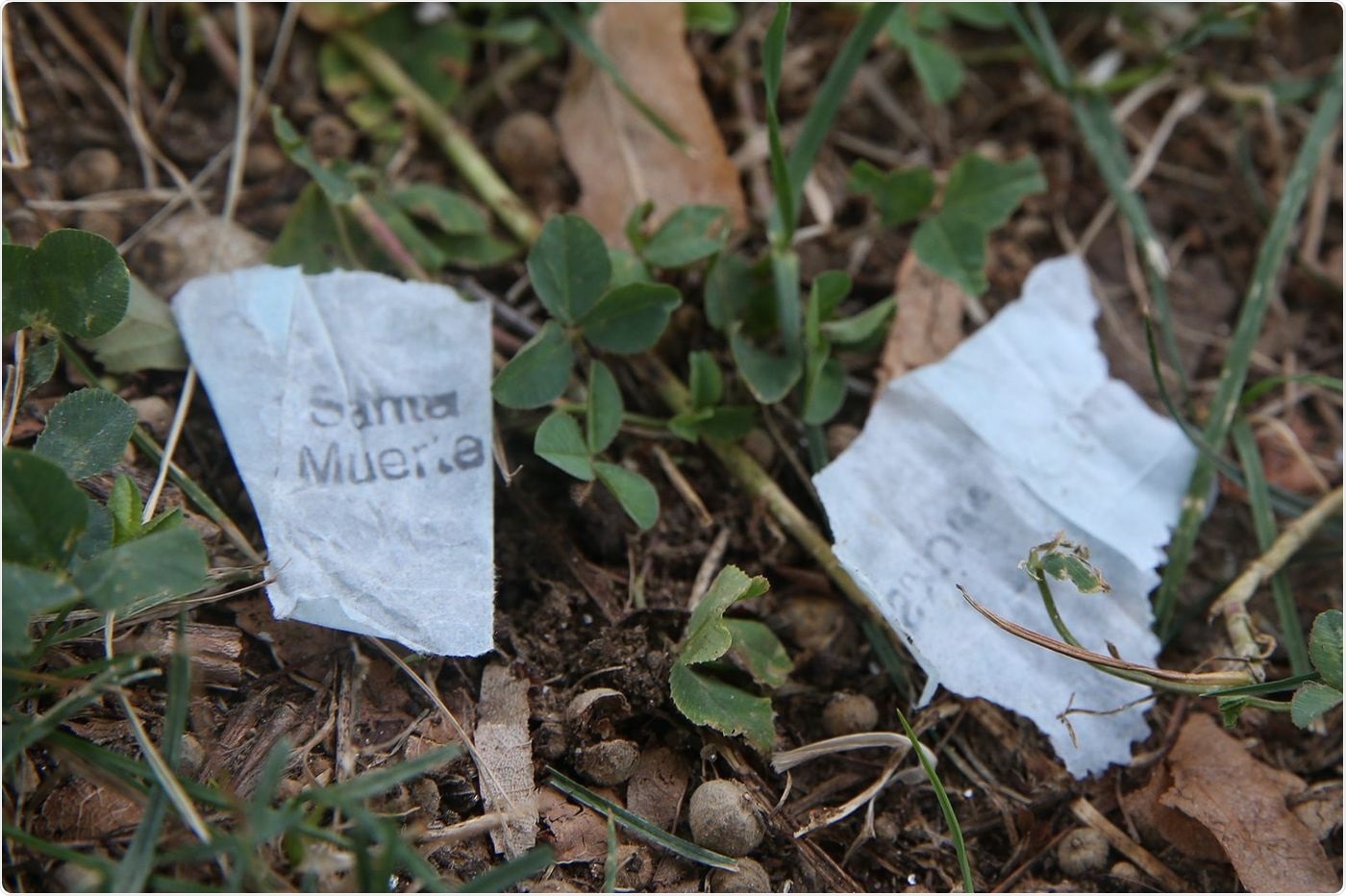
Image Credit: NPS Discovery.org
How does the detection and characterization of cannabinoids aid forensic cases?
The first detection is really important as it allows us to know what new synthetic cannabinoids are appearing within the drug market. This is what our laboratory aims to do. We report on the newest compounds that we are seeing.
Not every compound that we see will become the most prevalent in the drug supply, but we need to notify other forensic laboratories about these new synthetic cannabinoids. This means that they can be aware of them and add them to their testing panel.
That means that when they do have unexplained drug overdose deaths, they can go back and say, well, it could have been this new compound that NPS Disovery had reported previously.
In addition to this, we have done a lot of work on how synthetic cannabinoids breakdown within the body and metabolize. Depending on the type of sample you are analyzing, whether it be a drug sample, a blood sample, a urine sample, you have to make sure you are looking for the right drug and the right substance.
It might be a metabolite; therefore, it is not going to be the drug you think you are looking for as it has been broken down in the body. So, it is really important to characterize these new synthetic cannabinoids, that way forensic laboratories, again, are looking for the right compounds every time.
Additionally, other laboratories, as well as ones we are collaborating with, are looking into the activity and potency of some of these compounds. Sometimes we find a new synthetic cannabinoid that may not be active at the cannabinoid receptors in the body.
This is important to understand what the activity and potency of these compounds are. This is because when a forensic toxicologist is trying to interpret a result, they need to understand that the drug of interest can actually affect the body and that it is going to produce some effects, whether these are visible or not. This can affect the interpretation that one can make and whether or not they can link adverse effects to the compound itself.
You mentioned in your research that since 2018, 20 new synthetic cannabinoids have been discovered. How are new synthetic cannabinoids discovered?
Our laboratory has three main sources of data that we can discover these new synthetic cannabinoids through. The first one is to use drug data. So, whether it is a powder that is entering the country through the mail or whether it be a powder that feeds off the street, we can detect synthetic cannabinoids in those samples.
The second data source is forensic toxicology samples. These samples can be post-mortem blood samples after a drug overdose death or blood samples from driving under the influence of drugs.
Our third area is clinical data. We can get plasma or serum and urine samples from hospitals where people may be after an adverse reaction to a synthetic cannabinoid. And we can discover these new compounds in those different cases.
The analysis we run is different depending on the case present.
For the seized drug cases, we can run gas chromatography-mass spectrometry, which is a very common technique used in forensic laboratories. We can look at a compound and get its fingerprint based on its fragmentation data. Every molecule, every drug, every compound is going to have a chemical fingerprint associated with it.
We can compare these fingerprints to available library databases, either library databases that we generate in-house or library databases that are available elsewhere.
However, on the forensic toxicology and the clinical side of things we typically use liquid chromatography quadrupole time-of-flight mass spectrometry. This technique has been useful, being commonly used in a biological setting as it can parse out the complexity of the different major metabolites and compounds that we are looking at. This is because blood and urine samples, with drugs and metabolites in them, can be very complex.
If we have a sample that we need to send on and confirm, especially on the seized drug side, we can use additional technology such as nuclear magnetic resonance to confirm the structure of the compound.
But typically, our workflow goes through the process of trying to detect a compound that we have. So, we will identify an unknown compound in our sample, and then we will take that unknown compound through a series of experiments and a series of processes.
We can figure out what the structure of the new synthetic cannabinoid is and then we can carry out additional work to figure out how often we are seeing this compound in seized drug populations, in forensic toxicology populations, and then in the clinical populations.
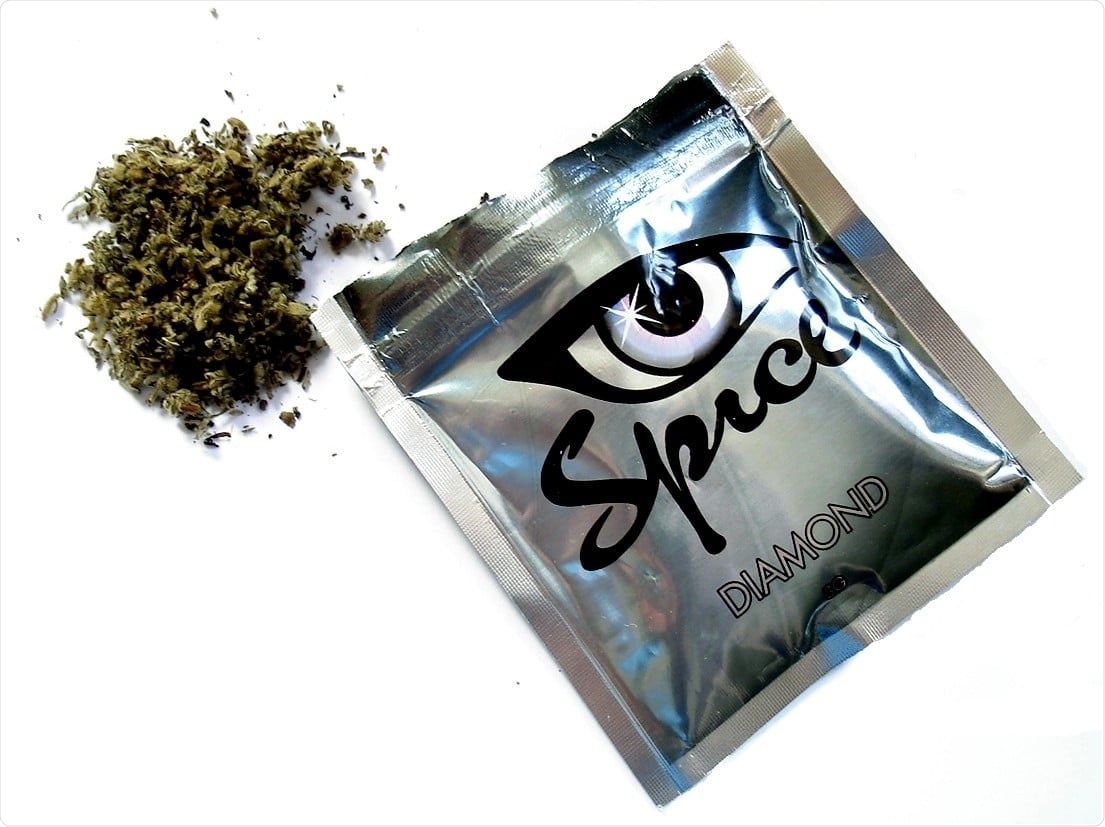
Image Credit: NPS Discovery.org
Why are these emerging synthetic cannabinoids so chemically diverse?
You can begin to build drug structures based on building blocks using carbon, hydrogen, nitrogen, oxygen, and there are many variations that you can put together. It is like piecing together a puzzle, and there are lots of different pieces.
There are functional groups, and different carbon backbones that you can replace, switch, and move around and the molecule can retain synthetic cannabinoid-like activity.
So, it comes down to the different variations and how many different pieces you can put together and move around. Then there are several different types of functional groups, and different elements used, other than the typical elements that we see, elements such as fluorine, chlorine, and bromine are sometimes added.
One of the things that has really propelled synthetic chemists to be able to synthesize these new compounds, is that synthetic cannabinoids were studied extensively from a research perspective in academia and by pharmaceutical companies.
There is a lot of published literature and patents out there on how these different molecules are synthesized. Different researchers and pharmaceutical companies created different structures that retained cannabinoid-like activity, so synthetic chemists can go and use these as instruction guides.
They know that as long as the structure looks similar to this, it will still retain its activity. Scientists can then try to synthesize a new compound for example, instead of using one carbon, using two carbons or using a different type of carbon backbone or structure.
This is why there are so many different variations of what you can do when piecing the puzzle together, making synthetic cannabinoids chemically diverse.
In your research, you mention that there are analytical challenges presented with synthetic cannabinoids. What are these challenges?
One challenge comes from their vast chemical diversity. Synthetic cannabinoids are not very similar to other drugs commonly dealt with. Typical drugs of abuse and other synthetic drugs that are often dealt with are more basic in their chemistry.
Whereas synthetic cannabinoids can often be more neutral and acidic. They are very non-polar, just like THC, the active ingredient in cannabis.
Another one of the challenges is that these compounds do not behave when we are trying to manipulate them in the lab and carry out experiments. As they do not behave in similar ways to other drugs, we often have to use special processes to analyze these compounds. We need to develop special methods that are different from some of the other methods that we commonly use.
Additionally, there can be some additional challenges when you are looking at parent compounds versus metabolites. Typically, parent compounds and metabolites do not behave in the same way. This means that instead of having a single method where you can detect both parent and metabolite, you have two different methods and maybe two completely different sample preparation techniques.
This makes it very difficult when you are trying to find new compounds, especially if you do not know how they are going to behave chemically.
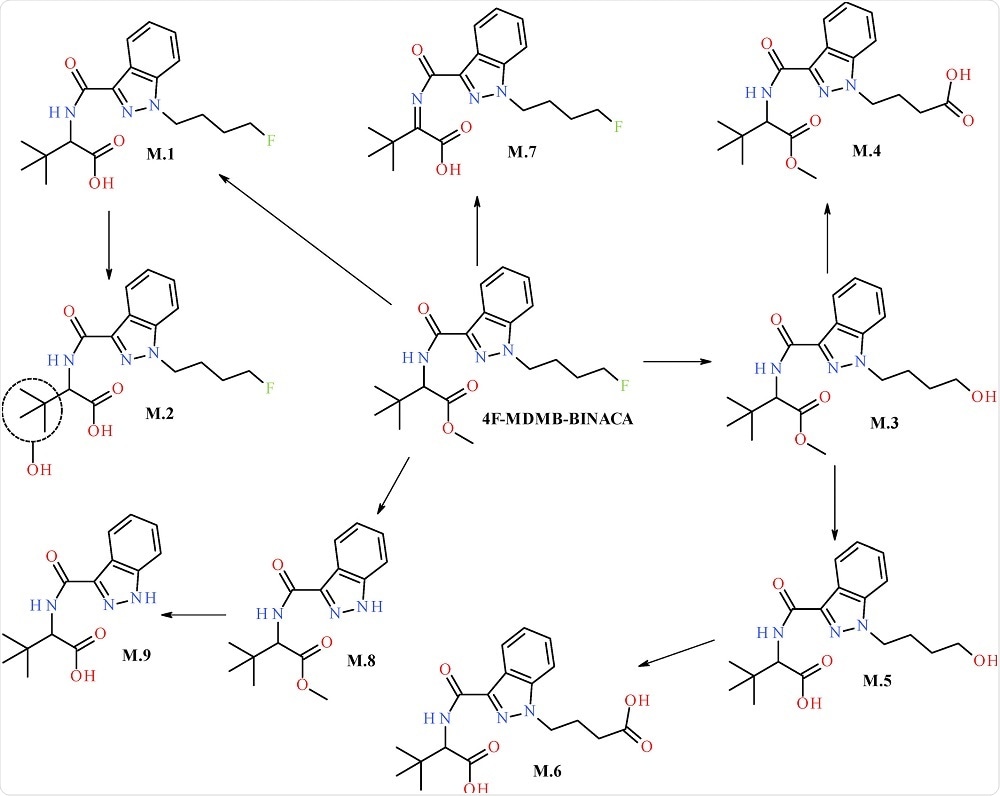
Image Credit:4F‐MDMB‐BINACA: A New Synthetic Cannabinoid Widely Implicated in Forensic Casework
Are there challenges with predicting the activity and potency of these synthetic cannabinoids?
Yes, this has been quite challenging. There are now several labs across the world that can look at the activity and potency in an experimental sense and can confirm some of this information.
Some models can try to predict the activity and potency of synthetic cannabinoids, but sometimes these can lack information and may not be accurate in how the compounds react in the body.
Predicting the activity and potency of a compound can sometimes be misleading. We need to focus on the laboratories who are carrying out experiments to get the confirmatory data for us, rather than focusing on predictive models.
Why are blood and urine useful samples to detect synthetic cannabinoids?
Blood samples are the primary go-to for forensic toxicology cases as these samples can detect parent compounds. This helps us to identify the culprit in terms of what substance or what synthetic cannabinoid was causing effects or death. Therefore, blood samples are very useful.
You need special methods usually to analyze these blood samples, however, but once you have these methods in place, they are very robust in terms of detecting these newer substances.
Urine samples, on the other hand, have different added benefits. One of the main problems with synthetic cannabinoids is that they are chemically diverse compounds, sometimes having different derivatives of a specific synthetic cannabinoid. For example, we might be looking at a compound that has one carbon on a certain functional group, versus two carbons on a certain functional group.
With urine, you can screen for certain metabolites and sometimes these synthetic cannabinoids will metabolize to a central metabolite, one that is common among several analytes. This can be very useful from a clinical setting as it provides information on whether or not someone has ingested a synthetic cannabinoid as it could have been hours before they are presented to an emergency department.
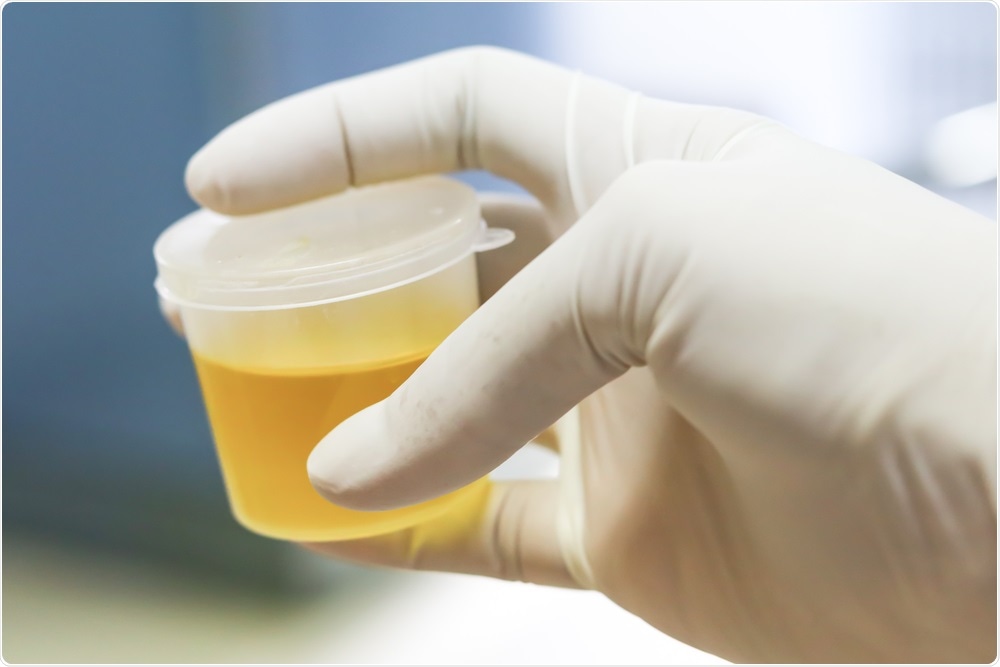
Image Credit: BENCHAMAT/Shutterstock.com
Why is Liquid Chromatography Quadrupole Time-OF-Flight Mass Spectrometry used to identify these cannabinoids in blood samples? What benefits does this bring compared to NMR or other analytical techniques?
For us, liquid chromatography-quadrupole time-of-flight mass spectrometry is really the best methodology that we have available for universal detection of these compounds. It gives us the most information and the most accurate information.
From a toxicology perspective, this instrument is sensitive and one of the problems with synthetic cannabinoids can also be the amount that is present, that causes impairment. Sometimes this can be a very small amount.
You need very sensitive instrumentation that can detect very small amounts of a drug because it can be toxicologically significant. This is one of the main benefits of using LC-Q-TOF-MS over NMR is its sensitivity.
To get good NMR data with toxicology samples such as blood and urine, you need a larger amount of sample and a very cleaned up sample. In its current setting, NMR analysis for the detection of a synthetic cannabinoid in biological samples is not useful or well-established.
Liquid chromatography can separate molecules so we can more accurately identify the compounds that we are looking at. Also, the quadrupole time-of-flight mass spectrometry aspect of the instrument gives us a lot of information that we can correlate back to the structure and back to the accuracy of the compound itself.
We can get the chemical formula and the fragmentation fingerprint. This gives us a lot of information giving us high certainty in what we are looking at.
It is really just the best methodology we have available right now for the universal detection of compounds, whether they be compounds we know about, parent compounds, metabolites, compounds that we do not even know about yet. It really gives us a good feel for being able to detect anything that we see or can't see coming.
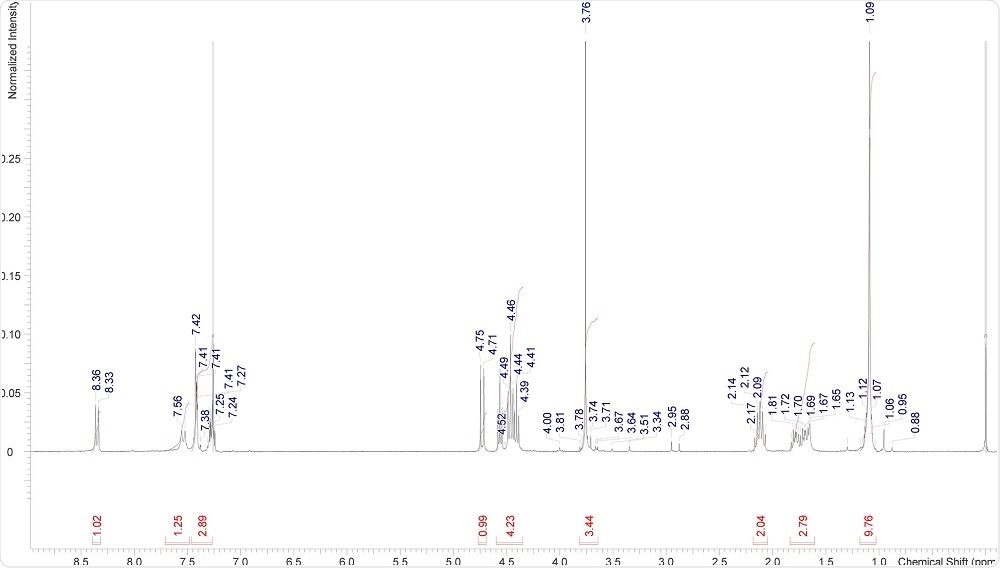
Image Credit: 4F‐MDMB‐BINACA: A New Synthetic Cannabinoid Widely Implicated in Forensic Casework
Do you believe that more synthetic cannabinoids will be discovered as cannabis use increases worldwide?
This is hard to tell at this point. We do continue here in the United States to detect synthetic cannabinoids even as states begin to legalize cannabis.
I am not sure how this frequency will change. I do not think that the frequency will increase drastically, and I am not sure if it will decrease.
We continue to detect these compounds here in the United States and to my knowledge, I do not think we have seen any really sharp declines in the United States since legalization has occurred in these states.
I can say that there are certain cities in the United States where decriminalization of cannabis has been implemented. We still see synthetic cannabinoid use in those cities, so it does not seem like people are moving from synthetic cannabinoids to cannabis. But really, I think that in the overall trend of synthetic cannabinoids worldwide.
I believe you are still going to have users that are looking for these, what is termed as legal highs, or they may just like synthetic cannabinoids as their drug of choice more than cannabis and I think they will continue to use them.
I do not necessarily see the numbers skyrocketing or declining drastically and I do still think that we will continue to detect synthetic cannabinoids as the world tries to figure out the legalization of cannabis.
What is next in your research into synthetic cannabinoids?
With the landscape of synthetic cannabinoids constantly evolving, there are always opportunities for research, whether they involve the detection of new compounds or the characterization of these compounds from a metabolomic standpoint, assessing how these compounds are breaking down in the body.
We have carried out additional research on the stability of some compounds, trying to make sure we are accurately looking for the right biomarker in blood samples and urine samples.
The discovery aspect of the research will always continue. I think that one of the really interesting sides of synthetic cannabinoid use comes down to, or as it expands, involves the activity and the potency of these cannabinoids, as well as their interactions with the body.
As newer compounds are discovered, we will need to identify if they still are CB1 active or CB2 active compounds. I think research here will continue and will become clearer as we study more and more compounds over time.
In addition, I think one of the areas that we have always found interesting is how else these synthetic cannabinoids are interacting with the body. Sometimes we find that synthetic cannabinoids present themselves clinically similar to opioids, an individual may seem like they are in respiratory depression like they have taken an opioid, but it is actually a synthetic cannabinoid that is the culprit.
So, I think the fascinating side of the research that is going to come out is truly understanding all the different pieces of the puzzle inside the body.
Once these drugs enter the body, how they are affecting an individual, whether they have positive or negative reactions within the body. How they are interacting with essentially other systems in the body, other receptor systems. How different drugs, in addition to synthetic cannabinoids, maybe potentiate the high that someone feels or combat that feeling inside the body. That is really, I think, the fascinating side of it.
I am looking forward to finding out more about that through different research.
Where can readers find more information?
Read more about The Center for Forensic Science Research and Education
Discover more about Novel Psychoactive Substances
4F‐MDMB‐BINACA: A New Synthetic Cannabinoid Widely Implicated in Forensic Casework
Detection and characterization of the new synthetic cannabinoid APP‐BINACA in forensic casework
Emerging Synthetic Cannabinoids: Development and Validation of a Novel Liquid Chromatography Quadrupole Time-of-Flight Mass Spectrometry Assay for Real-Time Detection
About Dr. Alex Krotulski
Dr. Alex J. Krotulski serves as a Research Scientist at CFSRE and Program Manager of NPS Discovery, a flagship program for the identification of new synthetic drugs and the dissemination of information surrounding their impact.
Dr. Krotulski primarily works as a forensic toxicologist in his role but conducts work as a forensic chemist as well.
Dr. Krotulski received his Doctor of Philosophy degree in Analytical Chemistry from Temple University following receipt of his Master of Science degree in Forensic Science from Arcadia University and Bachelor of Science in Chemistry from Loyola University New Orleans.
In his short career, Dr. Krotulski has authored or co-authored 23 publications in the areas of forensic toxicology and forensic chemistry, in addition to 34 presentations across various areas of forensic science and analytical chemistry.
Dr. Krotulski’s current research and casework focus heavily on aspects related to the detection and characterization of novel psychoactive substances (NPS), including studies that examine NPS positivity, trends, metabolism, and effects through intelligence, surveillance, monitoring, and response efforts.